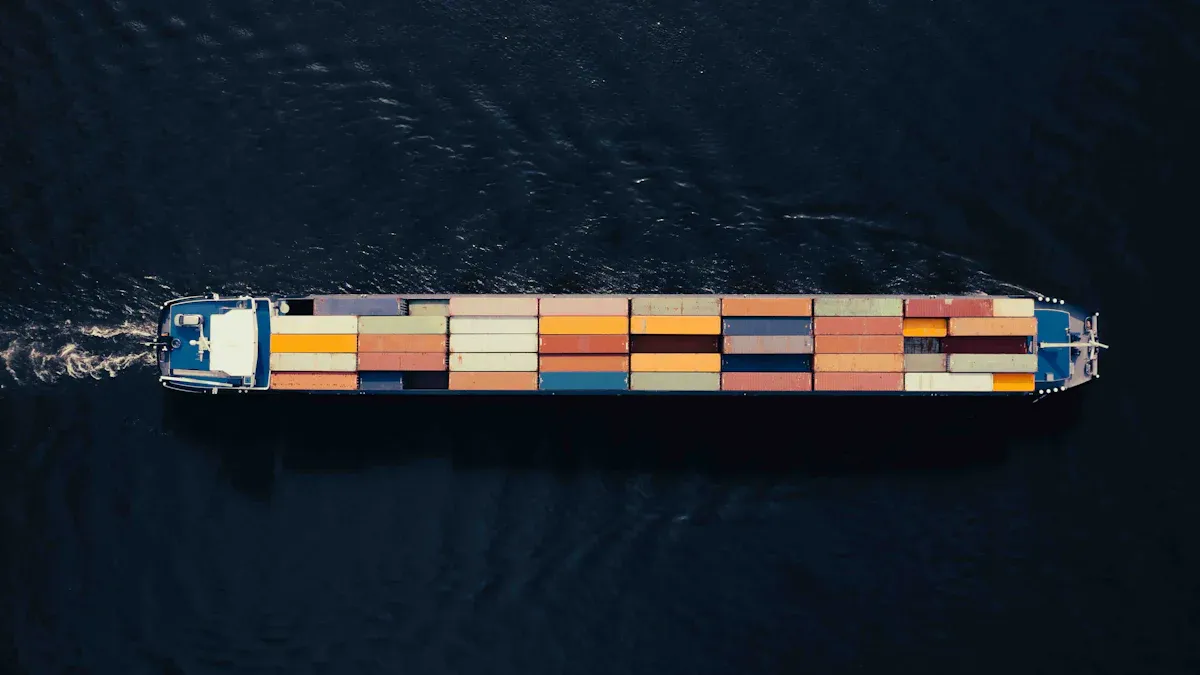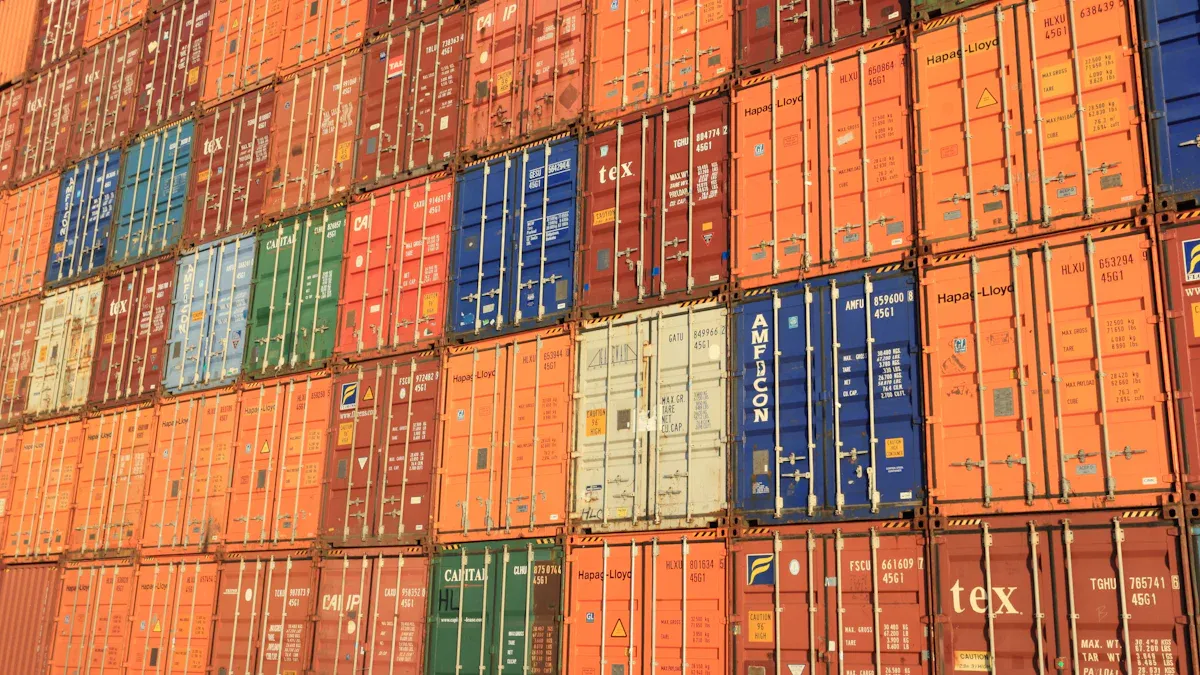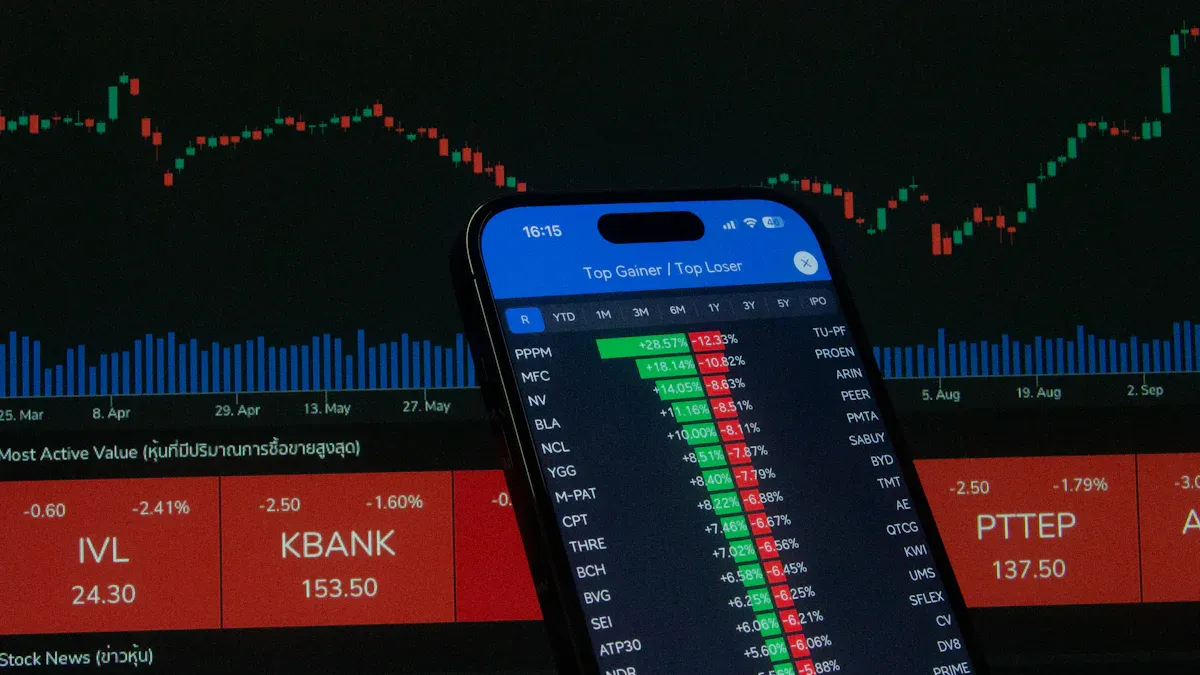Author:
-
Position:
General Manager of Foreign Trade Department, Taojun Refrigeration -
Professional Experience:
Engaged in international trade within the refrigeration industry since 2004.
Expert in brand strategy and omni-channel marketing, having led three multi-million yuan projects that boosted brand exposure by over 200%.
-
Core Competencies:
Proficient in data analysis and user growth strategies.
Skilled in SEO/SEM and social media management tools.
Experienced in cross-departmental collaboration and team leadership.
-
Philosophy:
"Data-driven decisions, creativity-powered branding." Committed to achieving business value and user experience excellence through refined operations. -
Vision:
Eager to collaborate with partners to explore emerging market opportunities and set industry benchmark cases.
Contact Us to Find More Products
Tracking the Shifts in Filter Import Volumes from China Across Countries in 2025

In 2025, Germany and Vietnam saw the largest increases in filter import volumes from China. Brazil and South Africa experienced sharp declines.
- Businesses must adjust supply strategies quickly.
- Policymakers face new challenges in trade policy.
These shifts impact global supply chains and market stability.
Key Takeaways
- Germany and Vietnam led the growth in filter imports from China in 2025, while Brazil and South Africa saw sharp declines due to economic and policy changes.
- Trade policies, tariffs, and supply chain disruptions caused many countries to shift sourcing away from China toward Southeast Asia and Latin America.
- Successful companies adapted by diversifying suppliers, investing in regional manufacturing, and using smart technologies to improve efficiency and resilience.
Top Countries by Filter Import Volume in 2025

Leading Filter Importers
In 2025, several countries dominated the landscape of filter imports from China. Germany led the market with a significant increase in demand. The United States maintained a strong position, driven by its robust manufacturing and automotive sectors. Vietnam emerged as a major importer, reflecting rapid industrial growth and increased investment in air and water purification technologies.
| Rank | Country | Import Volume (Units) | Year-over-Year Change (%) |
|---|---|---|---|
| 1 | Germany | 4,200,000 | +18 |
| 2 | United States | 3,950,000 | +7 |
| 3 | Vietnam | 3,100,000 | +22 |
| 4 | India | 2,850,000 | +5 |
| 5 | Japan | 2,600,000 | +3 |
Note: The table above highlights the top five countries by filter import volume from China in 2025. These figures reflect both established markets and rising demand in Asia.
Germany’s leadership in filter imports signals a shift in European industrial priorities. The United States continues to rely on Chinese suppliers for advanced filtration solutions. Vietnam’s rapid ascent demonstrates the impact of industrialization and stricter environmental standards.
New Entrants and Declining Filter Markets
Several countries entered the top importers list for the first time in 2025. Mexico and Indonesia showed notable growth, driven by expanding manufacturing bases and increased infrastructure projects. These new entrants benefited from favorable trade agreements and improved logistics networks.
- New Entrants in 2025:
- Mexico
- Indonesia
At the same time, some markets experienced sharp declines. Brazil and South Africa saw significant drops in filter import volumes. Economic slowdowns and shifts toward local production contributed to these decreases.
- Countries with Declining Filter Imports:
- Brazil
- South Africa
Businesses in these regions face challenges from changing market dynamics and evolving supply chain strategies.
The emergence of new importers and the decline of traditional markets illustrate the dynamic nature of global filter trade. Companies must monitor these shifts to stay competitive and responsive to changing demand patterns.
Year-Over-Year Filter Import Changes
Countries with the Largest Filter Import Increases
In 2025, several countries recorded remarkable growth in their import volumes from China. Germany led this group with an 18% year-over-year increase. This surge resulted from new environmental regulations and a push for cleaner industrial processes. Vietnam followed closely, posting a 22% jump. The country invested heavily in manufacturing and infrastructure, which drove up demand for advanced filtration solutions.
The following table highlights the top performers in terms of import growth:
| Country | Year-over-Year Change (%) | Key Drivers |
|---|---|---|
| Vietnam | +22 | Industrial expansion, environmental policy |
| Germany | +18 | Stricter regulations, tech upgrades |
| Mexico | +15 | Automotive sector growth, trade incentives |
| Indonesia | +13 | Infrastructure projects, urbanization |
Note: These countries benefited from both domestic policy changes and global supply chain shifts.
Mexico and Indonesia also saw double-digit increases. Mexico’s automotive industry ramped up production, which required more filtration components. Indonesia’s urbanization and infrastructure projects created new demand for clean air and water technologies.
Countries with the Sharpest Filter Import Declines
While some countries expanded their imports, others experienced significant drops. Brazil faced a 14% decrease in filter imports from China. The country’s economic slowdown and increased local production contributed to this decline. South Africa saw a 12% reduction, mainly due to currency fluctuations and a shift toward regional suppliers.
A closer look at the countries with the largest declines:
- Brazil: Economic challenges and a focus on domestic manufacturing led to lower import volumes.
- South Africa: Exchange rate instability and new trade barriers reduced demand for Chinese products.
- Turkey: A 9% drop resulted from new tariffs and a pivot to European suppliers.
- Russia: Political tensions and logistical disruptions caused a 7% decrease.
These declines signal changing trade relationships and evolving supply chain strategies.
Countries with declining imports often responded to local economic pressures or policy changes. Some governments encouraged domestic production to reduce reliance on imports. Others faced external factors, such as tariffs or currency issues, that made Chinese products less attractive.
Key Trends in Filter Imports from China
Regional Demand Shifts for Filters
In 2025, regional demand for filters from China shifted in response to economic and policy changes. South America, especially Brazil, experienced a notable decline in imports. Brazil's government raised import taxes from 9.6% to 25%, which discouraged international developers and increased costs for imported goods. Higher interest rates and new trade routes further reduced the appeal of Chinese products. Although this trend was most visible in solar-related imports, it reflected a broader pattern of reduced reliance on Chinese suppliers for industrial components, including filters. Other regions, such as Southeast Asia and Europe, maintained or increased their demand, driven by industrial growth and stricter environmental standards.
Growth Hotspots in Filter Imports
Several countries emerged as growth hotspots for filter imports from China in 2025. Vietnam and Indonesia led the way in Southeast Asia, fueled by rapid urbanization and investment in infrastructure. Germany and Mexico also saw strong growth, supported by new regulations and expanding manufacturing sectors. These countries prioritized clean air and water technologies, which increased demand for advanced filtration solutions.
| Country | Growth Driver |
|---|---|
| Vietnam | Industrial expansion |
| Indonesia | Urbanization, infrastructure |
| Germany | Environmental regulations |
| Mexico | Automotive sector growth |
Companies operating in these markets should monitor policy changes and supply chain developments to capitalize on emerging opportunities.
Factors Influencing Filter Import Changes

Policy and Regulatory Effects on Filter Trade
Governments shaped filter trade in 2025 through new tariffs and export controls. The United States imposed tariffs as high as 200% on Chinese imports. This action led to a collapse in Trans-Pacific shipping, with nearly 200 container ship voyages canceled in March and April. The Port of Los Angeles handled more containers before the tariffs took effect, but also saw a sharp rise in empty containers leaving the port. China responded by tightening export restrictions on rare earth magnets, which caused a 51% drop in exports and disrupted supply chains for automotive and electronics industries. These policy changes forced companies to rethink sourcing strategies and contributed to lower filter import volumes from China.
Supply Chain and Logistics Impacts on Filter Imports
Supply chain disruptions in 2025 had a direct impact on filter imports. Tariff-driven trade tensions caused retailers to shift supply chains away from China toward countries like Vietnam, India, and Mexico. Many companies accelerated domestic production to reduce reliance on Chinese suppliers. The restrictions on rare earth magnets created bottlenecks for critical components, further reducing import volumes. Logistics networks faced stress as canceled sailings and empty containers disrupted normal trade flows. These changes pushed businesses to diversify sourcing and adapt to new logistics realities.
Market Demand and Industry Dynamics for Filters
Several industry sectors drove increased demand for filters in 2025. Semiconductor manufacturing expanded rapidly, requiring advanced filtration for cleanrooms. The automotive, consumer electronics, telecommunication, and healthcare sectors also contributed to higher demand. Rapid industrialization and urbanization in Asia-Pacific increased the need for HVAC systems and fiberglass filters. Stricter air pollution regulations and post-pandemic health awareness led to greater adoption of high-performance filtration solutions. Consumer preferences shifted toward sustainable and smart-feature products, prompting manufacturers to innovate and diversify supply chains. Trade policies and tariffs encouraged the rise of local production hubs in Southeast Asia, changing global import patterns.
Implications for Global Filter Trade and Supply Chains
Effects on International Filter Trade Flows
International trade flows for filters shifted dramatically in 2025. Countries responded to tariffs and geopolitical tensions by changing their sourcing strategies. Many businesses moved away from high-risk regions and sought alternative suppliers in Southeast Asia and Latin America. Trade agreements such as the USMCA and ASEAN Free Trade Area helped companies reduce import duties and maintain steady supply. Companies also improved stock management by balancing just-in-time inventory with strategic buildup during periods of low tariffs. These changes created new trade routes and diversified the global supply network.
Note: Companies that adapted quickly to new trade policies maintained a competitive edge and reduced the impact of supply chain disruptions.
Risks and Opportunities for Filter Businesses
Filter businesses faced a complex risk landscape in 2025.
- Geopolitical unpredictability disrupted supply chains and reduced supplier flexibility.
- Tariff uncertainty slowed imports, especially for countries with high transport costs.
- Price volatility in metals, driven by energy costs and sanctions, increased operational risks.
- Fragmented regulatory environments complicated compliance.
- Workforce challenges, including skills shortages and changing career values, added pressure.
Despite these risks, several opportunities emerged:
- Reshoring and nearshoring reduced dependence on high-risk countries.
- Alternative sourcing from India, Latin America, and Australia improved supply stability.
- Technology investments in AI and automation enhanced efficiency and forecasting.
- Circularity initiatives reduced reliance on volatile raw materials.
- Increased local defense spending and partnerships, especially in Europe, opened new markets.
Filter companies that diversified sourcing, leveraged trade frameworks, and invested in workforce modernization positioned themselves for long-term growth.
Actionable Insights for Filter Importers
Strategies for Adapting to Filter Import Trends
Leading companies responded to 2025 market shifts by adopting innovative strategies that improved efficiency and resilience. Many organizations invested in technology, expanded production capacity, and focused on sustainability. The following table highlights how top industry players adapted and the outcomes they achieved:
| Company | Strategy Implemented | Impact / Outcome |
|---|---|---|
| Philips Healthcare | Launched smart media-based filters with IoT monitoring | 34% of institutional clients improved operational efficiency; 42% reduction in manual maintenance |
| GE Healthcare | Expanded manufacturing capacity in Southeast Asia | 28% increase in output; 36% faster supply timelines; addressed 45% regional demand growth |
| Shimadzu Corp. | Developed multi-layer hybrid filters combining media + UV | 31% pilot users reported better bacterial removal and taste; targeted 22% domestic sales |
| Fujifilm Holdings | Introduced eco-friendly bio-based media filters | Reduced plastic use by 48%; 25% adoption in urban projects; 33% lighter filters; 21% lower logistics cost |
| Siemens Healthcare | Integrated AI-driven predictive maintenance platform | 38% reduction in unscheduled maintenance; 27% increase in uptime; 43% customer upgrades |
These strategies demonstrate the value of proactive investment in smart technology, regional manufacturing, and sustainable materials. Companies that embraced these approaches gained a competitive edge and improved their ability to meet changing market demands.
Monitoring and Responding to Filter Market Shifts
Successful importers rely on advanced tools and data sources to track market changes and respond quickly. Several platforms provide real-time insights into trade flows, competitor activity, and supply chain performance.
- Tendata iTrader and China Import Data offer detailed customs information, including company details, product descriptions, HS codes, weights, prices, and logistics data.
- These platforms support competitor analysis by revealing market share, cargo flow, and trade trends.
- Importers use this data to optimize supply chains, identify reliable suppliers, and monitor geographic shifts in demand.
- Transaction-level insights help businesses adjust sourcing strategies and anticipate disruptions.
Tip: Regularly reviewing trade data and leveraging analytics platforms enables companies to stay ahead of market shifts and maintain supply chain resilience.
Global filter import patterns in 2025 reveal rapid diversification and supply chain restructuring. Companies now prioritize resilience, innovation, and sustainability. Policymakers and businesses must monitor evolving trade flows and regulatory trends. 🌍 Adapting to these shifts will shape future competitiveness and support growth in the expanding filter market.
FAQ
What caused the biggest changes in filter import volumes in 2025?
New trade policies, tariffs, and supply chain disruptions drove the largest shifts. Countries responded by changing suppliers and investing in local production.
How can businesses track filter import trends from China?
Businesses use platforms like Tendata iTrader and China Import Data. These tools provide real-time customs data, competitor analysis, and supply chain insights.
What strategies help companies adapt to changing filter import markets?
- Companies diversify suppliers.
- They invest in regional manufacturing.
- Many adopt smart technologies for better forecasting and supply chain management.








